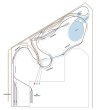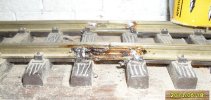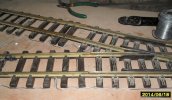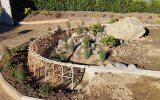Bill Bagal
Registered
Hi all
New member and poster here. Currently building a garden railway. Roadbed is in, earthworks completed, planting underway, bridges and tunnel built, and soon to install track. Layout is a folded dogbone shape with about 100m of LGB track and will be powered by an NCE DCC system.
I know that the rail joiners won't be reliable long term so I am wondering if we should install a bus wire with feeders to each track section or should we invest in rail clamps? If a bus the what gauge of wire to use? Yes, I know the bigger the better but then cost is also a factor to be considered.
Thanks in advance and kind regards.
Bill
New member and poster here. Currently building a garden railway. Roadbed is in, earthworks completed, planting underway, bridges and tunnel built, and soon to install track. Layout is a folded dogbone shape with about 100m of LGB track and will be powered by an NCE DCC system.
I know that the rail joiners won't be reliable long term so I am wondering if we should install a bus wire with feeders to each track section or should we invest in rail clamps? If a bus the what gauge of wire to use? Yes, I know the bigger the better but then cost is also a factor to be considered.
Thanks in advance and kind regards.
Bill




